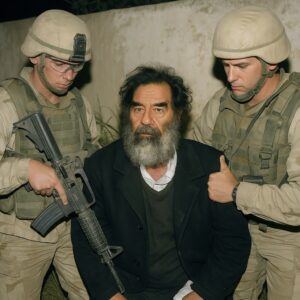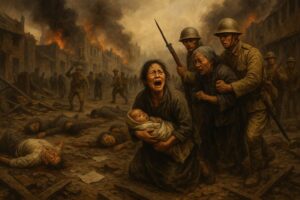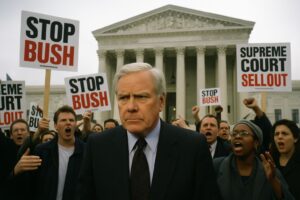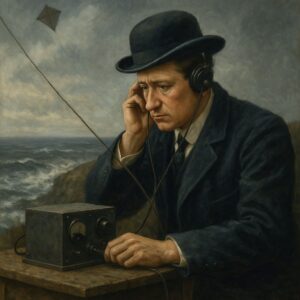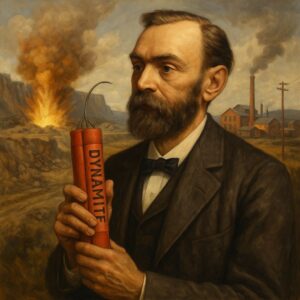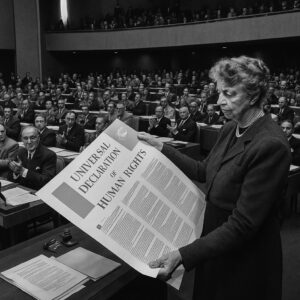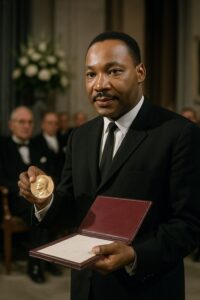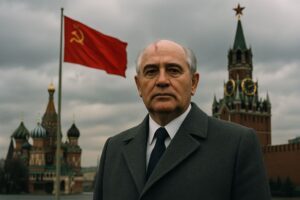On December 13, 2003, the long and obsessive hunt for Saddam Hussein finally came to an end in a quiet, unremarkable farmhouse on the outskirts of Tikrit, the dusty region that had once served as the heartland of his power. For nearly eight months after the fall of Baghdad, the former Iraqi dictator had vanished into the shadows, becoming a symbol of unfinished business for the United States and a lingering specter of fear and uncertainty for the Iraqi people. His capture that night was not simply the arrest of a man; it was the collapse of a myth that had dominated Iraq for more than three decades.
The search for Saddam Hussein began long before the first American tanks rolled across the Iraqi border in March 2003. For years, U.S. intelligence agencies had studied his habits, his paranoia, and his elaborate system of survival. Saddam ruled through fear and unpredictability, cultivating loyalty through patronage while ruthlessly eliminating anyone who posed even a perceived threat. He understood power as something that must be constantly defended, and that instinct guided every move he made once the invasion began.
When Baghdad fell in April 2003, many expected Saddam to be captured quickly or killed in a final act of defiance. Instead, he disappeared. His palaces stood empty, his statues were toppled, and yet the man himself seemed to melt into the Iraqi landscape. Rumors flourished. Some believed he had fled the country. Others insisted he was hiding among tribal allies, protected by loyalty and fear in equal measure. Each unconfirmed sighting kept tensions high and prevented any sense of closure.
Behind the scenes, the U.S. military and intelligence community launched one of the most intensive manhunts in modern history. Operation Red Dawn, as it would later be called, relied on painstaking intelligence work rather than brute force. Captured Ba’ath Party officials were interrogated, documents were analyzed, and financial trails were tracked. The net slowly tightened, not through dramatic raids but through incremental discoveries that revealed how Saddam survived on the run.
Saddam’s survival strategy was simple but effective. He avoided electronic communication entirely, relying instead on handwritten notes and trusted couriers. He moved constantly, sleeping in safe houses, farm buildings, and remote shelters. He grew a beard to disguise himself, abandoned his lavish lifestyle, and lived off basic food supplied by loyal supporters. Yet even in hiding, he remained convinced of his own destiny. According to later reports, Saddam believed the American occupation would collapse and that he would return to power as a symbol of Iraqi resistance.
As the months passed, the psychological impact of Saddam’s continued freedom weighed heavily on coalition forces. His absence fueled insurgent propaganda and allowed loyalists to claim he was still directing resistance efforts. Every roadside bomb and ambush carried the implicit message that Saddam’s influence had not been extinguished. Capturing him became both a strategic necessity and a symbolic imperative.
The breakthrough came not through chance, but through patient intelligence work. In late November 2003, U.S. forces discovered documents tied to Saddam’s inner circle near Tikrit. These materials pointed toward a small network of supporters who had remained fiercely loyal despite the collapse of the regime. Tikrit, Saddam’s hometown, had always been a stronghold of tribal allegiance, and it was here that investigators suspected he might seek refuge.
On December 13, a coordinated operation unfolded across the rural areas near Ad-Dawr. Soldiers from the 4th Infantry Division moved methodically through farms and compounds, guided by precise intelligence. The landscape offered countless hiding places—palm groves, irrigation ditches, and mud-brick structures that blended seamlessly into the terrain. Each site had to be cleared carefully, as resistance was always a possibility.
As night fell, one particular farmhouse drew attention. Locals had reported unusual activity, and subtle signs suggested recent occupation. U.S. troops surrounded the area, moving with deliberate caution. What they found initially seemed unremarkable, but a closer inspection revealed a concealed hiding place—a narrow underground compartment barely large enough for a single person.
Inside that cramped space, disheveled and exhausted, was Saddam Hussein.
The moment was surreal. The man who once commanded vast armies and lived in opulent palaces was pulled from a dirt hole, clutching a pistol but offering no real resistance. He appeared frail, confused, and defeated. His beard was long and unkempt, his clothes dirty, and his expression a mixture of defiance and resignation. The myth had collapsed into a human being.
News of Saddam’s capture spread with astonishing speed. Within hours, images of the former dictator undergoing a medical examination were broadcast around the world. For many Iraqis, the images were both shocking and cathartic. Fear had shaped their lives for decades, and now the source of that fear was powerless. In cities across Iraq, spontaneous celebrations erupted. People danced in the streets, fired celebratory shots into the air, and spoke openly about atrocities they had once been too afraid to mention.
In Washington, the reaction was equally intense. President George W. Bush addressed the nation, declaring that Saddam Hussein had been captured and would face justice. For the U.S. administration, the moment represented validation of the invasion’s objectives, at least in symbolic terms. The capture was framed as a decisive blow against tyranny and a turning point in Iraq’s future.
Yet beneath the celebrations, difficult questions lingered. Capturing Saddam did not end the violence. Insurgent attacks continued, and the power vacuum left by the regime’s collapse proved far more complex than anticipated. The removal of a dictator did not automatically produce stability, and Iraq’s deep sectarian and political divisions soon came to the forefront.
Saddam’s legal fate became the next focal point. After months of deliberation, it was decided that he would be tried by an Iraqi court rather than an international tribunal. For many Iraqis, this decision carried immense symbolic weight. They wanted to see him answer to his own people, in the country he had ruled with absolute authority.
The trial began in October 2005 and quickly became one of the most closely watched legal proceedings in modern history. Saddam, defiant to the end, challenged the legitimacy of the court and attempted to dominate the proceedings. He interrupted judges, insulted prosecutors, and portrayed himself as a victim of foreign aggression. To his supporters, his defiance was proof of strength. To his victims, it was a painful reminder of his arrogance.
Prosecutors presented harrowing evidence of crimes committed during Saddam’s rule, including mass executions, torture, and ethnic cleansing. Survivors testified about loved ones who disappeared, villages that were destroyed, and lives that were permanently scarred. The trial forced Iraq to confront its past in a public and often emotionally overwhelming way.
In November 2006, Saddam Hussein was convicted of crimes against humanity and sentenced to death. The verdict was met with mixed reactions. Many Iraqis felt a sense of closure, believing justice had finally been served. Others worried that the execution would deepen divisions and fuel further violence. International observers debated whether the trial met global standards of fairness, but within Iraq, the prevailing sentiment was one of finality.
On December 30, 2006, Saddam Hussein was executed by hanging. His final moments were recorded and later leaked, sparking controversy and debate worldwide. For some, the images represented the end of a brutal chapter in history. For others, they underscored the chaos and unresolved tensions that continued to plague Iraq.
The years following Saddam’s death were marked by both hope and hardship. Iraq struggled to build democratic institutions while grappling with insurgency, sectarian violence, and foreign influence. The legacy of Saddam’s rule loomed large, shaping political decisions and public discourse long after his execution.
For the Iraqi people, the fall of Saddam Hussein was not a single moment, but a long and painful process. His capture removed the figurehead of oppression, but the scars of his regime remained etched into the nation’s collective memory. Families continued to search for missing relatives, mass graves were uncovered, and the truth of decades of abuse slowly came to light.
For American soldiers involved in the operation, Saddam’s capture was a defining moment of their service. It validated months of dangerous work and offered a rare sense of accomplishment in a conflict defined by ambiguity. Yet many returned home carrying invisible wounds, struggling to reconcile the mission’s objectives with the human cost of war.
Today, Saddam Hussein remains one of the most polarizing figures in modern Middle Eastern history. To some, he is remembered solely as a tyrant responsible for unimaginable suffering. To others, he symbolizes resistance and lost national pride. His story resists simple conclusions, reflecting the complexity of power, fear, and loyalty in a region shaped by conflict.
The capture of Saddam Hussein stands as a reminder that history is rarely neat or satisfying. It is shaped by human ambition, error, and consequence. While his arrest marked the end of one era, it also marked the beginning of another—one defined not by a single ruler, but by the ongoing struggle of a nation seeking stability, justice, and identity in the aftermath of dictatorship.

